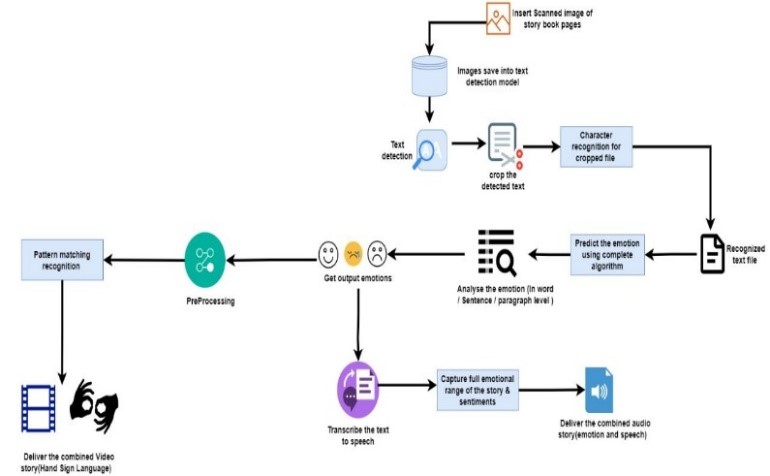Emotional Storyteller for Vision Impaired and Hearing-Impaired Children
Main Article Content
Abstract
Tellie is an innovative mobile app designed to offer an immersive and emotionally enriched storytelling experience for children who are visually and hearing impaired. It achieves this through four main objectives: Text extraction utilizes the CRAFT model and a combination of Convolutional Neural Networks (CNNs), Connectionist Temporal Classification (CTC), and Long Short-Term Memory (LSTM) networks to accurately extract and recognize text from images in storybooks. Recognition of Emotions in Sentences employs BERT to detect and distinguish emotions at the sentence level including happiness, anger, sadness, and surprise. Conversion of Text to Human Natural Audio with Emotion transforms text into emotionally expressive audio using Tacotron2 and Wave Glow, enhancing the synthesized speech with emotional styles to create engaging audio narratives. Conversion of Text to Sign Language: To cater to the Deaf and hard-of-hearing community, Tellie translates text into sign language using CNNs, ensuring alignment with real sign language expressions. These objectives combine to create Tellie, a groundbreaking app that empowers visually and hearing-impaired children with access to captivating storytelling experiences, promoting accessibility and inclusivity through the harmonious integration of language, creativity, and technology. This research demonstrates the potential of advanced technologies in fostering inclusive and emotionally engaging storytelling for all children.

